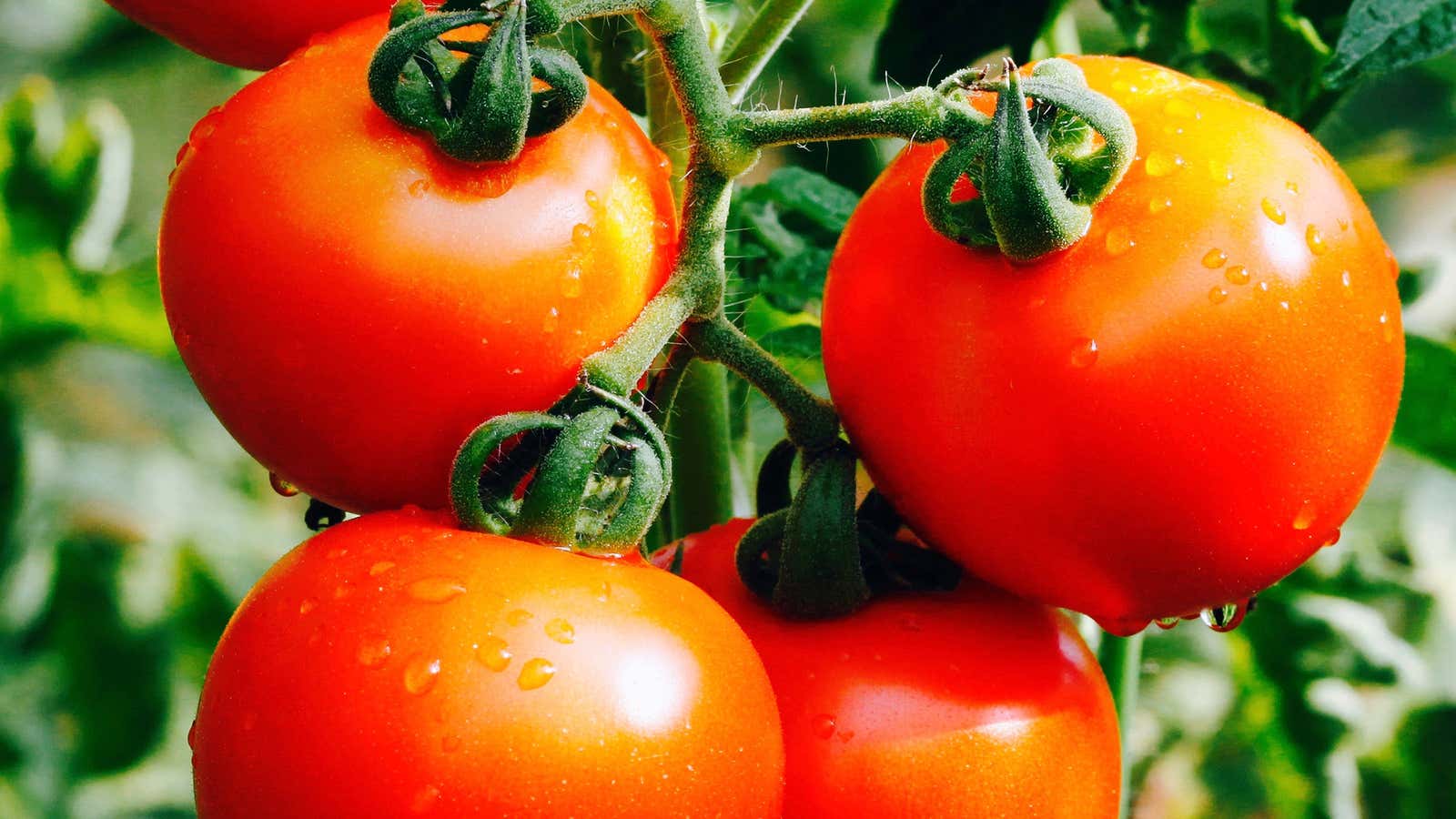Even if tomato growers one day manage to produce a near-perfect fruit—one that’s beautiful, juicy, nutritious, and tasty—there’s a good chance that half a billion people would automatically be denied the chance to even try it.
There’s a lot to improve on when it comes to the modern tomato. For starters, its genetic design is tailored more for growers and shippers than it is for the people who’ll ultimately buy them. The plants have been bred over the years so their fruit less frequently drops to the ground before it can be picked. And today’s tomatoes are typically sturdier than their ancestors, which helps them sustain more jostling when shipped from farms to grocery stores. But in the process, a lot of flavor was lost.
At least three groups of plant scientists around the world are currently working to figure out the precise genetic makeup to make a new tomato that meets the needs to growers and shippers, and satisfies the tastebuds of those who actually eat the fruit. They’re tinkering with the plant’s genetics using Crispr-Cas9 gene editing tools, though, which means the results may never be approved for sale in the European Union, where Crispr and similar techniques are essentially off-limits for those working in food science.
When genetically-modified foods became part of international conversation in the mid-1990s, the European public was skeptical. That was in part due to food safety scandals that had recently hit the continent, including an outbreak of mad cow disease. In general, the public had lost a degree of trust in the institutions charged with ensuring food safety, and the appetite for new types of genetically-engineered products didn’t sit well.
In 2001, the EU passed a law that set a high bar for genetically-modified foods to get approval for the market, including going through a lengthy approval process that will likely hinder investors from pouring their capital into new crop research using high-tech tools. (A European court earlier this year suggested relaxing rules across the EU, but the 2001 directive still stands.)
Some food scientists point to the European law as an unnecessary impediment to innovating with crops. In the case of the new tomatoes, for example, the scientists say they’re using Crispr-Cas9 tools not to re-write genetic code, but rather to just turn off some genes, which could actually be achieved through conventional breeding. The big difference? What took just three years for one group of scientists to create with Crispr-Cas9 would have taken decades using older methods.
And the tomato is just the beginning. The European government will also have to wrestle with new food products such as cell-cultured meats and milks. Food scientists have figured out how to create real meat by taking animal cells and growing them into fat and muscle tissue, without ever having to slaughter an animal. Still under European law, such food would be considered “novel,” and would be subject to a rigorous application process that can take up to two years to gain approval.
With wait times like that, it will be harder for interesting technological advancements in foods to take hold in one of the world’s most important economies.
